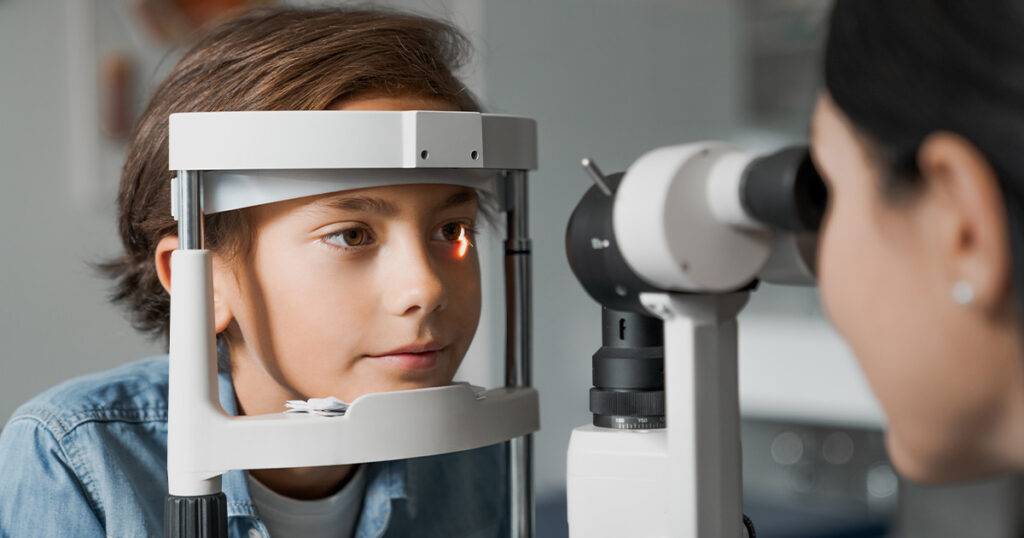Have questions about getting affordable insurance for your children? Linneo has the answers
Vision insurance for kids is an essential component of your child’s overall health care. Many parents—however—need help navigating the complex landscape of pediatric vision coverage. The reality is that without adequate vision insurance for kids, regular eye exams and necessary corrective measures can quickly become a financial burden.
With so many parents uncertain how to make sure their kids get the essential eye care they require without incurring a huge expense, Linneo is here to get parents the answers they need. Today, we’ll be going over the importance of vision insurance for kids, when you need to take your child to the optometrist, and the different ways that you can secure coverage for your children.
If you are currently worried about the out-of-pocket expenses associated with eyecare for kids, definitely keep reading. Linneo has the answers you need to ensure your child’s vision health. Let’s get started!
The Importance of Vision Insurance for Kids
Without vision insurance for kids, the cost of getting glasses or contacts is likely higher than you expect
Eye care is an important component of your kid’s wellness. Regular eye exams are the key to early detection and treatment of potential vision problems. With the right vision insurance for kids, you can save on these essential services.
However, without proper coverage, these necessary check-ups can become quite costly. That’s where having comprehensive vision insurance comes into play. Insurance can help with everything from routine visits to optometrists to covering corrective eyewear like glasses or contact lenses if needed.
Before your child’s first birthday, three screenings should be conducted to assess your child’s visual acuity as well as general eye development. Early identification ensures timely intervention against any possible issues.
Regular Eye Exams for Children
As your child continues to grow, they will require official eye exams. These exams typically begin at age 3 and continue annually until age 6. Moving forward toward school-age years, children need eyesight checks twice each year—unless advised otherwise by healthcare professionals due to existing concerns or risk factors.
Routine examinations are more than just immediate correction needs—they also help doctors monitor changes over time that could hint at progressive conditions.
By securing vision insurance for your child, you are making sure that their eye health is taken care of throughout these important developmental stages. In the next section, we’re going to be going over some of the specifics regarding eye exams and other eye care services.
When Should Your Child Have Their First Eye Exam?
Vision is an important aspect of young childhood development—make sure you are taking the right steps for your kids

One of the first steps to understanding kids’ vision care is to determine when they need to see a professional. To get started, the American Optometric Association suggests babies undergo an initial visual assessment within their first year.
The InfantSEE program, a public health initiative, offers free eye exams for children aged 6-12 months to ensure early detection of any potential issues. Detecting potential issues at this stage is crucial as they can be addressed immediately before they progress.
When to Schedule Regular Eye Exams For Children
Your child’s official journey into regular eye examinations typically starts at age three. These annual check-ups are important in detecting signs of vision problems or abnormalities before they escalate.
These regular eye exams should continue until six years old—a critical period where significant developmental changes occur in children’s eyesight. After this stage, if no risk factors are present and there is no need for vision correction, these visits can be spaced out every two years instead.
Bear in mind that individual circumstances may warrant more frequent visits. You should always consult with your local participating pediatric optometrist regarding the best schedule for your child’s needs. Consistency with these appointments is essential not only for maintaining optimal ocular health but also ensuring normal development and academic success.
Public Programs Offering Vision Coverage for Kids
If you don’t have insurance through your employer, you can get limited coverage from programs like CHIP
The public sector offers a variety of programs to ensure that children have access to essential vision services. These include the Children’s Health Insurance Program (CHIP) and provisions under the Affordable Care Act.
Let’s explore these two key initiatives, their coverage details, and how they can be leveraged effectively by families in need.
The Children’s Health Insurance Program is designed with the aim of providing health insurance—including vision care benefits—for children who may not qualify for Medicaid but still require assistance due to financial constraints. CHIP covers a range of services, such as regular eye exams along with glasses if required. While specific benefits might vary from state to state, they all share one common goal—ensuring no child goes without necessary vision care because of family income levels.
Affordable Care Act: Expanding Accessibility & Coverage
The Affordable Care Act (ACA), also known as Obamacare, has significantly broadened accessibility and coverage when it comes to pediatric health insurance. One critical aspect of this law mandates that most healthcare plans must offer pediatric services, which include comprehensive vision coverage.
With careful scrutiny, you can ensure your child is getting maximum protection against possible eyesight issues through covered annual eye exams and corrective eyewear.
Balancing dental care needs alongside adequate provision for your child’s visual well-being could depend heavily on individual circumstances. That’s why exploring both options offered via CHIP and ACA would make sense.
Deciphering the Costs of Vision Insurance for Children
Before you take your child to their first appointment, it is important to assess the overall cost

Navigating through the world of vision insurance for your child can seem intimidating. The cost varies significantly depending on numerous factors, including your location and your chosen vision insurance plan. It’s crucial to make an informed decision by comparing different providers’ prices.
This typically includes coverage such as an annual eye exam and allowances towards glasses or contact lenses. Some policies may even provide additional benefits like scratch-resistant lens coatings and select extras at no extra charge.
Deductibles & Copays
Apart from premiums, there are other expenses that you need to consider—deductibles and copayments. These out-of-pocket costs can quickly accumulate if not factored into your budget early on.
- The deductible is what you must pay before your insurer begins covering services—it generally ranges between $0-$50 in most pediatric vision policies.
- Copayments are fixed amounts paid each time a service is accessed—these vary but often sit around $10-$30 for an eye exam under many child’s private vision insurance providers.
Is Vision Insurance Worth It?
If your child requires corrective eyewear or has any issues requiring specialist care, such as strabismus (crossed eyes) or amblyopia (lazy eye), having standalone kids’ vision insurance could save money over time compared with paying out-of-pocket directly.
That’s where Linneo comes into play. With a family of three or more, Linneo individual vision insurance plans include allowances up to $250.00 for eyewear and vision accessories and allowances up to $100.00 for eye exams. This includes both telehealth consultations and prescription renewal services.
Additionally, families of 3 or more can save up to 28% on eyewear and eyecare services using Linneo. If you don’t have access to vision insurance for kids through your employer, then you should definitely explore your options for individual vision insurance to help offset the costs associated with children’s eye care.
Additional Ways to Save on Eye Care
Beyond vision insurance, there are other things you can do to ensure that you get the best price for your kid’s vision care
Saving money while ensuring your child’s vision health is not limited to getting insurance coverage. There are also supplementary methods you can use to make sure you are getting the best vision care without breaking the bank.
FSA and HSA: Pre-Tax Benefit Accounts for Vision Coverage
Pre-tax contributions to FSA or HSA can be made for eligible healthcare expenses such as eye exams, glasses, and contact lenses. An FSA typically needs to be used within a plan year, whereas an HSA rolls over annually if unused.
Retail Stores and Discount Websites: Affordable Eyewear Options
Purchasing eyewear from online retail stores can get you additional discounts on top of vision insurance. With Linneo, you can maximize your savings with additional deals from our online network partners. When one of our partners is having a sale, you can “stack” your discounts on top of each other. By keeping up to date with current sales and offerings from our partners, you can easily maximize your benefits with Linneo’s vision insurance coverage.
Eyewear Savings Plan
Linneo also offers an eyewear savings plan that can help families save on eyewear for their children. An eyewear savings plan—sometimes called a vision discount plan—is not insurance. Rather, it offers an across-the-board discount for eyewear for a year. With a Linneo vision discount plan, you can access a 15% discount on eyewear for your family for as little as $12 per year.

Comprehensive Vision Coverage From Glasses to Contact Lenses
Beyond getting the right vision care for your kids, you need to also prioritize glasses, contacts, and other vision accessories
Vision coverage extends beyond the annual eye exam. It also provides access to essential corrective measures such as glasses and contact lenses. This means your child’s vision insurance plan should take into account costs associated with frames, lens types, and even additional features like scratch-resistant lens coatings and select extras.
Your child’s specific visual impairment will determine the type of glasses or contacts they need. Some children may require single-vision glasses for nearsightedness or farsightedness, while others might benefit from bifocals or progressive lenses if they have presbyopia.
Glass Frames and Lens Coatings: A Closer Look
Diverse options are available when it comes to glasses frame selection covered by most insurance plans. These include resilient plastic frames, metal frames that provide a sleek look, and flexible ones made from durable materials like carbon fiber.
Lens coatings are another aspect of getting specialized glasses. Coatings enhance eyeglass functionality and longevity, while scratch-resistant coatings protect against everyday wear-and-tear damage. Anti-reflective coating reduces glare caused by light hitting the backside of lenses, improving comfort during digital device usage.
Contact Lenses
If your child is active and plays sports, then contact lenses could be a viable alternative to easily breakable glasses. Lots of older children and teens also want to try contacts for the aesthetic difference, as well. Your pediatric optometrist can assess whether your kid(s) are ready for contact lenses based on maturity level, personal hygiene habits, and other factors. Maintaining healthy eyes requires proper contact lens care.
However, note that some policies provide either eyeglass or contact lens benefits per period so it is important to completely understand exactly what your plan covers before making decisions regarding their vision.
FAQs About Getting Vision Insurance for Kids
Why is vision care important for children?
Vision care ensures early detection and treatment of eye problems, contributing to a child’s overall health, academic performance, and quality of life.
What are common vision problems in children?
Vision issues in kids include refractive errors (nearsightedness, farsightedness), lazy eye (amblyopia), crossed eyes (strabismus), color blindness, and other developmental disorders.
Are the disadvantages of vision insurance?
The limitations may include coverage restrictions on certain treatments or eyewear brands. Some plans also have waiting periods before services become available.
By choosing Linneo as your family’s vision insurance provider, you can save hundreds on eyecare and eyewear each year. With our family-centered policies, you can ensure that every member of your family gets the care they need. In fact, the more members on your policy, the more you can save with Linneo. Ready to save on the vision care your family needs? Find out how much you can save today!

